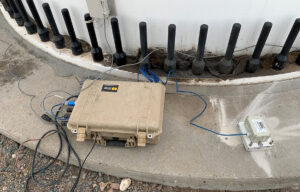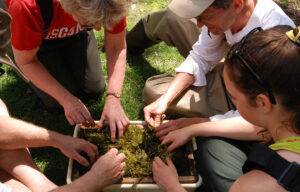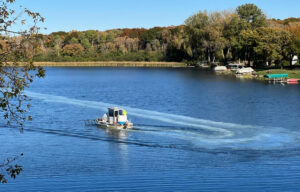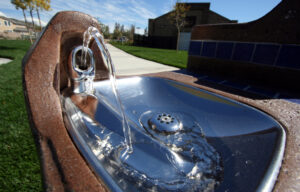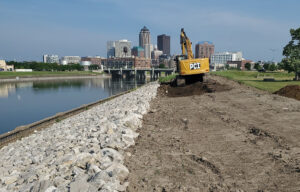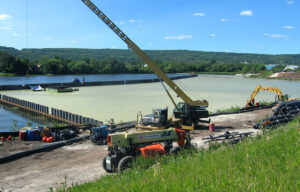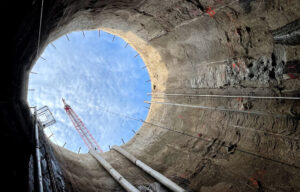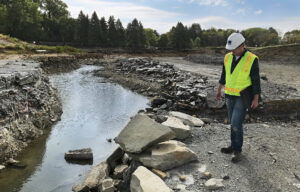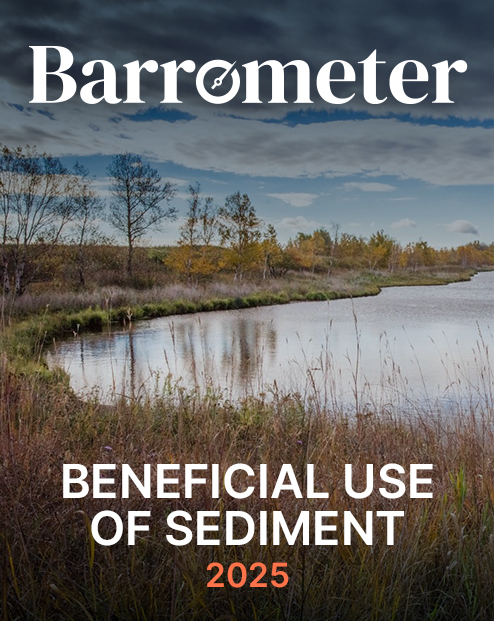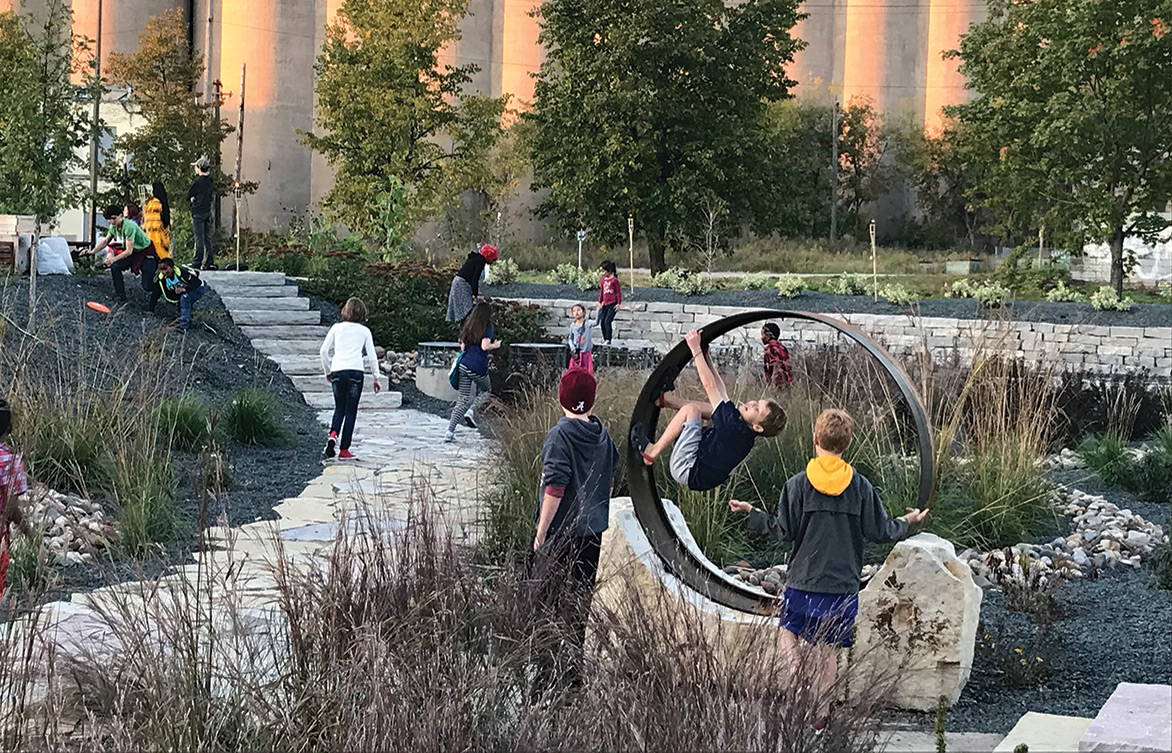 The stormwater park in the Towerside Innovation District is home to a community greenspace and offers stormwater-management engagement and education.
The stormwater park in the Towerside Innovation District is home to a community greenspace and offers stormwater-management engagement and education.
Two projects honored for engineering excellence
Two Barr projects recently earned awards from state chapters of the American Council of Engineering Companies (ACEC). Highly regarded in the engineering industry, ACEC’s Engineering Excellence Awards recognize projects that demonstrate an exceptional degree of innovation, complexity, and value.
Barr and the Mississippi Watershed Management Organization (MWMO) partnered to develop a first-of-its-kind district stormwater management system in the Twin Cities, receiving a Grand Award in the Waste and Storm Water category from ACEC Minnesota. The system is located within the Towerside Innovation District, which centers on creative, sustainable community development. Thousands of feet of piping conveys runoff to large, pollinator-friendly biofiltration basins before it enters a 207,000-gallon underground cistern. Ultraviolet treatment, another likely first in Minnesota, allows for irrigation reuse for community gardens and landscaping. This communal approach supports the community’s sustainability and climate-resiliency goals, and it provides public-greenspace benefits in this rapidly redeveloping, former industrial area.
In addition, Barr’s work on a slope stabilization project was recognized by ACEC Michigan with a 2023 Honorable Conceptor Award. Barr provided design and construction administration services to construct a unique, radial array of 32 subsurface horizontal drains drilled into a slope near a hydroelectric project. This solution draws shallow groundwater out of the soil, substantially mitigating slope movement and protecting power generation operations, river water quality, and public safety.
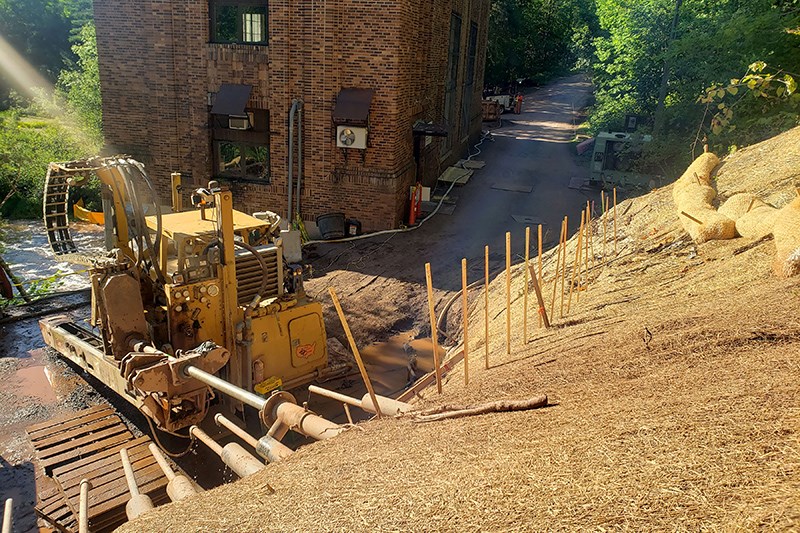
Contact us for more information about stormwater management, green infrastructure, stacked-benefits, and slope stabilization projects.
About the authors
Nathan Campeau, vice president, senior water resources engineer, has nearly two decades of experience in hydrologic and hydraulic analysis, flood risk management, green infrastructure, and GIS. A certified floodplain manager, he works closely with watershed districts and cities on projects involving stormwater management, flood analysis and mitigation, and low-impact site design.
Bethany Kelly, senior geotechnical engineer, has more than 15 years of geotechnical engineering experience, primarily serving power and mining clients in Michigan, the upper Midwest, and the western United States. She leads field investigations involving in-situ testing and sampling, instrumentation installation, and hydraulic interconnection studies. Bethany also conducts seepage, stability, and deformation analyses of hydroelectric and tailings-basin dams and ash facilities. She has served as the technical lead or engineer of record for more than 20 dam design and rehabilitation projects as well as assisted with permitting and construction.



